Kodak S16mm depicts burning passions in Oliver Laxe’s 2019 Cannes-winning feature 'O Que Arde' ('Fire Will Come')
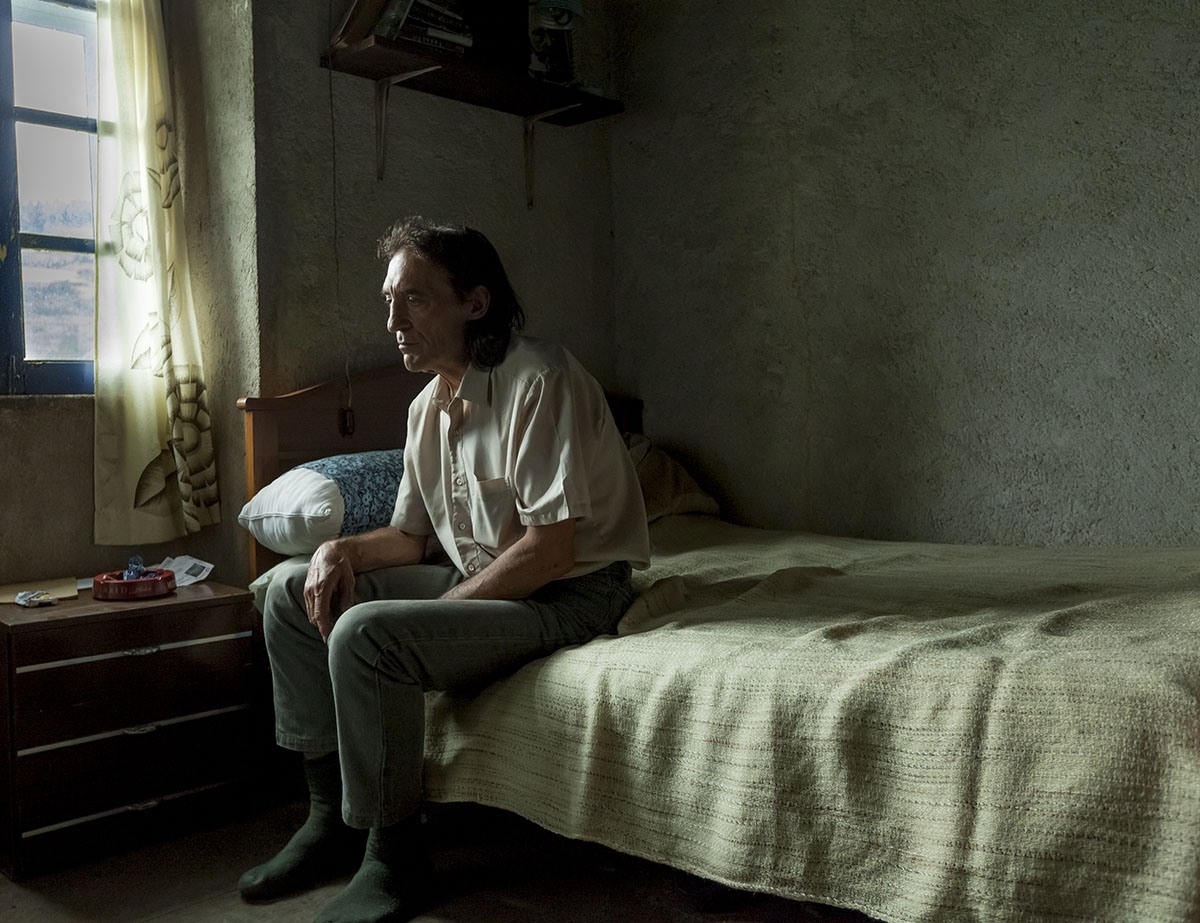
Actor Amador Arias in a scene from Oliver Laxe’s production O Que Arde. Image © miramemira.
Captured on Kodak Super16mm film, the smoldering Spanish drama, O Que Arde (Fire Will Come), from director Oliver Laxe, screened in the Un Certain Regard section at the 2019 Cannes Film Festival and blazed a winning trail to the prestigious Jury Prize.
The production, about the threatened extinction of rural life in the Galician mountains, received glowing reviews for its striking imagery of ravaged nature, shot by Spanish cinematographer Mauro Herce. It represents the DP’s second collaboration with Laxe as director, following the 2016 Cannes, Critics Week-winning film, Mimosas, also lauded for its majestic camerawork, and also shot on Kodak 16mm film. The pair previously worked together, with Laxe as the producer, on The Fifth Gospel Of Kaspar Hauser (2013), directed by Alberto Gracia, which Herce shot using a 16mm Bolex camera.
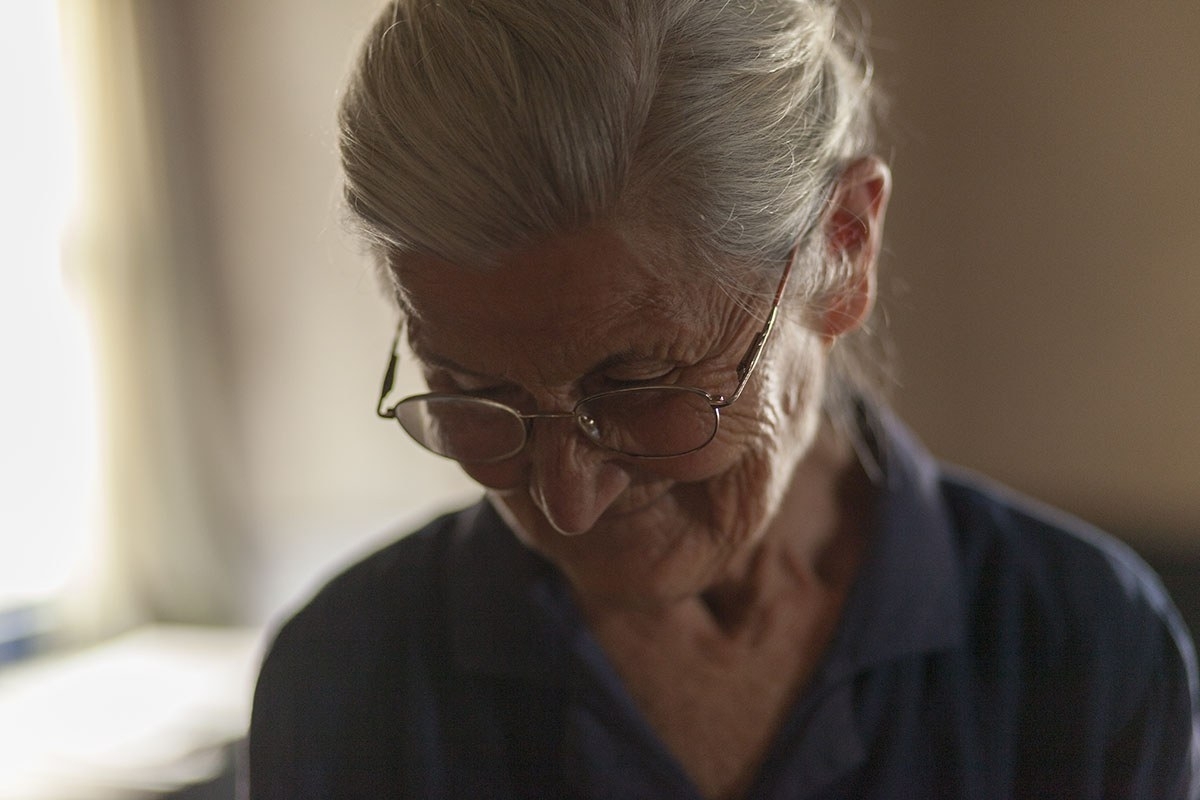
Actor Bendicta Sánchez in a scene from Oliver Laxe’s production O Que Arde. Image © miramemira.
Spoken in Galician language, the script for O Que Arde, was co-written by Laxe and Santiago Fillol. When Amador Coro gets paroled from prison for having provoked a disastrous fire that ripped across half a mountainside, nobody is waiting for him. He returns to his home, a small village hidden in rural Galicia, to live with his elderly mother, Benedicta, and three cows. Amador keeps himself-to-himself, ignoring the taunts of the locals, and life goes calmly, following the rhythm of nature. Until, that is, one night when a new conflagration comes to devastate the area.
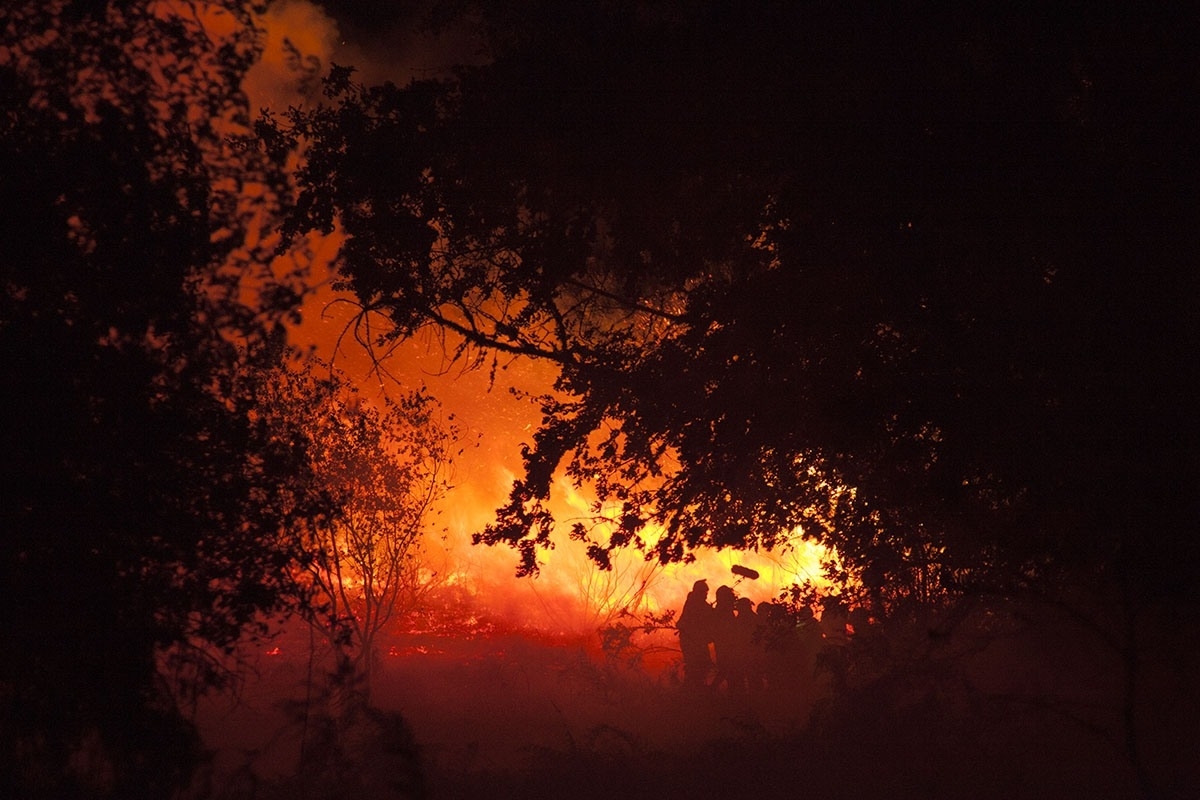
The camera crew get up close and personal in a forest inferno, during production on Oliver Laxe’s O Que Arde. Image © miramemira.
“Oliver and I, wanted to keep the imagery as naturalistic, and minimalistic, as possible, nothing forced or glorified, so as to create a passionate poignancy of anger and sorrow that grows on you in small degrees – the frailty of Benedicta, the haunted look of Amador, and especially raw power of the wildfires themselves,” says Herce. “I am always happy to shoot on film. Film has something different, a kind of spiritual aura, in the colours and shades it registers, that video just does not have.”
Production on O Que Arde took place over the course of a year in the Galicia and Asturias regions of northwest Spain. This encompassed separate shoots of real forest fires during the summers of 2017 and 2018, often with the film crew having to wait patiently for an actual wildfire to occur. Production also took place in the winter and spring of 2018.
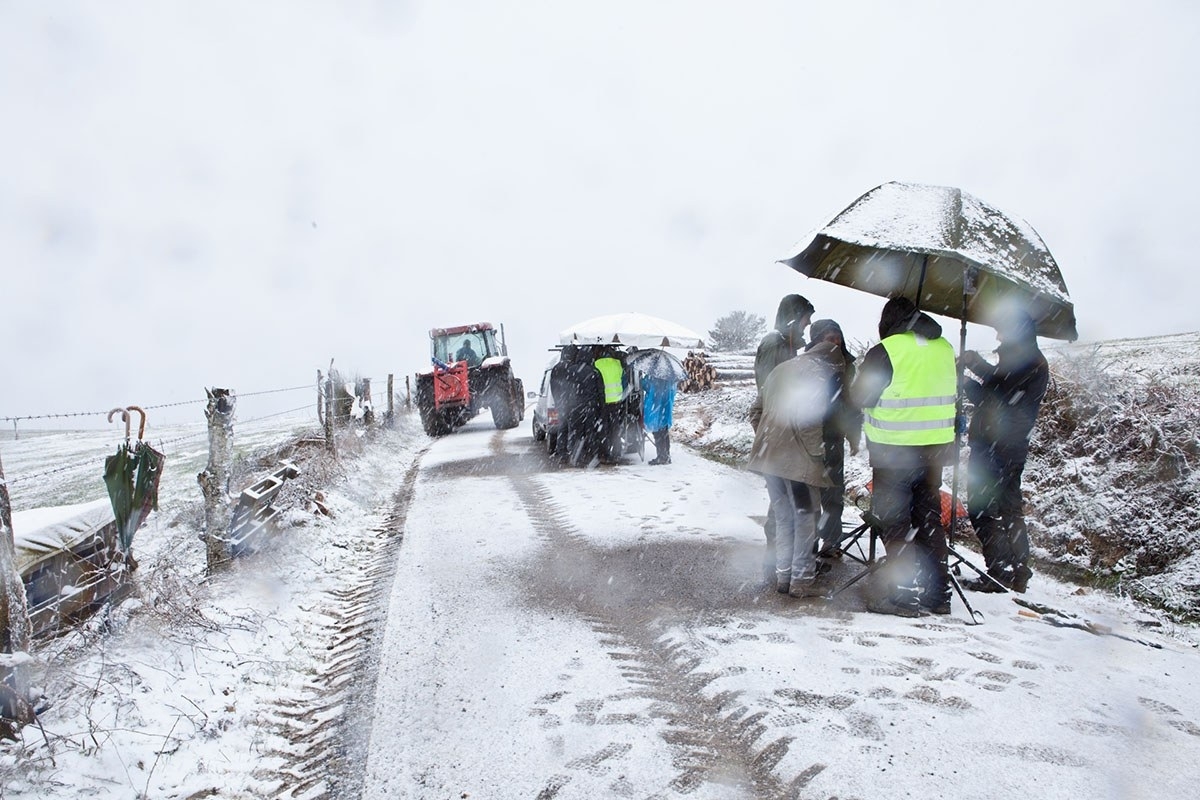
Shooting one of the winter scenes in Oliver Laxe’s production of O Que Arde. Image © miramemira.
For the shoots, Herce selected ARRI 416 16mm cameras, framing in 1.85:1 aspect ratio, using ARRI Zeiss Ultra Prime lenses. To film the narrative sections of the story, particularly those featuring Amador and Benedicta, Herce mounted the camera on a tripod and employed static framing or slow pans to discretely capture what he calls, “the beauty of small things as the actors performed.”
However, the camerawork went handheld as the cinematographer shot alongside local firecrews and volunteers attempting to quell real bushfires.
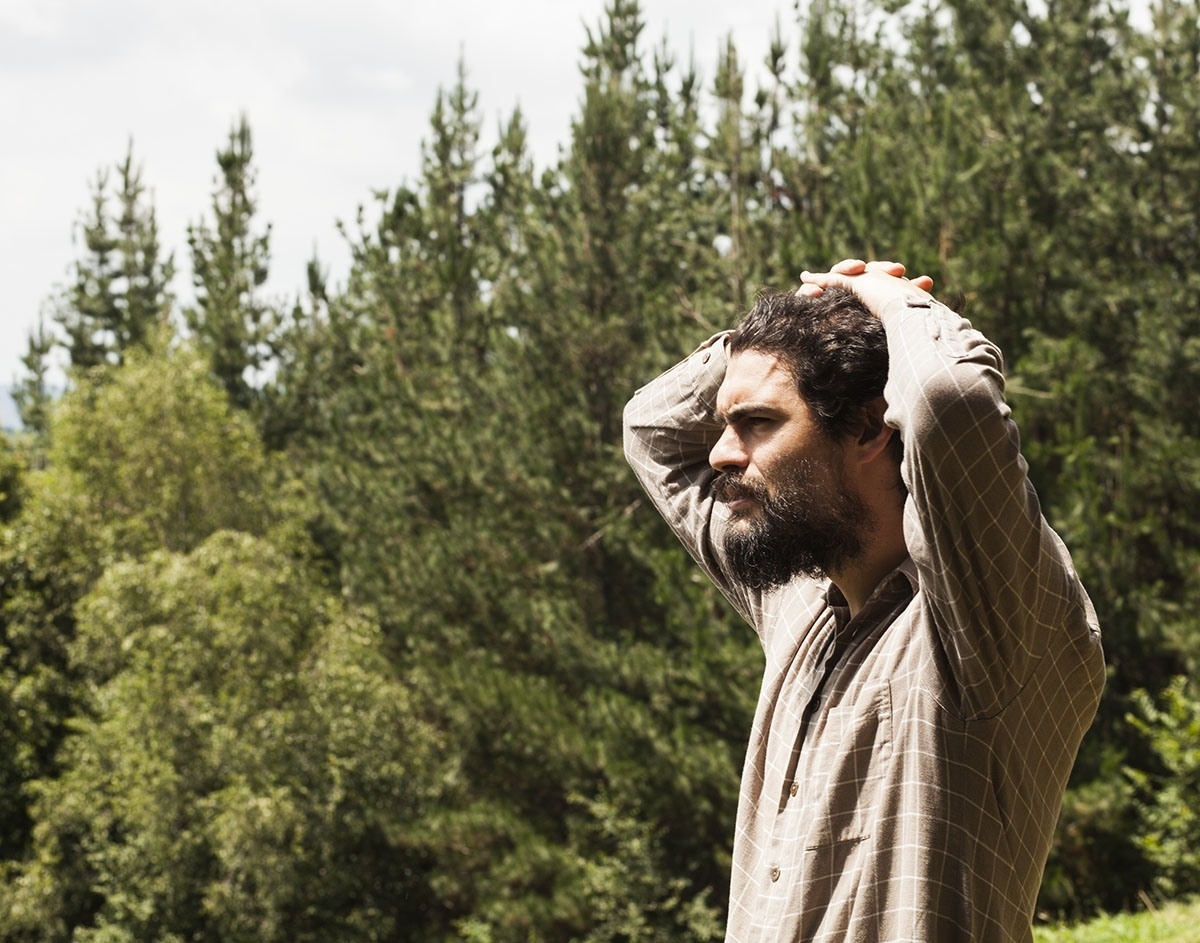
Director Oliver Laxe pictured during on O Que Arde. Image © miramemira.
“The experience of shooting fires is addictive. We were filled with adrenaline, covered in dark charcoal soot, and became a little bit crazy in following the flames so closely,” says Herce. “The beauty of 16mm is that the camera package is very small, light and maneuverable, which was perfect for filming the diabolic nature of the fires themselves in a dynamic fashion. But, it is was also important because these are extremely dangerous situations – hot, smoky, and you never know where the flames might go next. So it was important for us to be agile and to able to move fast for the sake of safety.”
Herce went with KODAK VISION 3 250D (7207) to shoot the day exteriors and some day interiors, while utilizing KODAK VISION 3 500T (7219), with an 85 filter, for the movie’s night and fire sequences. In keeping with the director’s desire for a naturalistic aesthetic, the production was shot as much as possible in available light, with minimal intervention of artificial illumination.
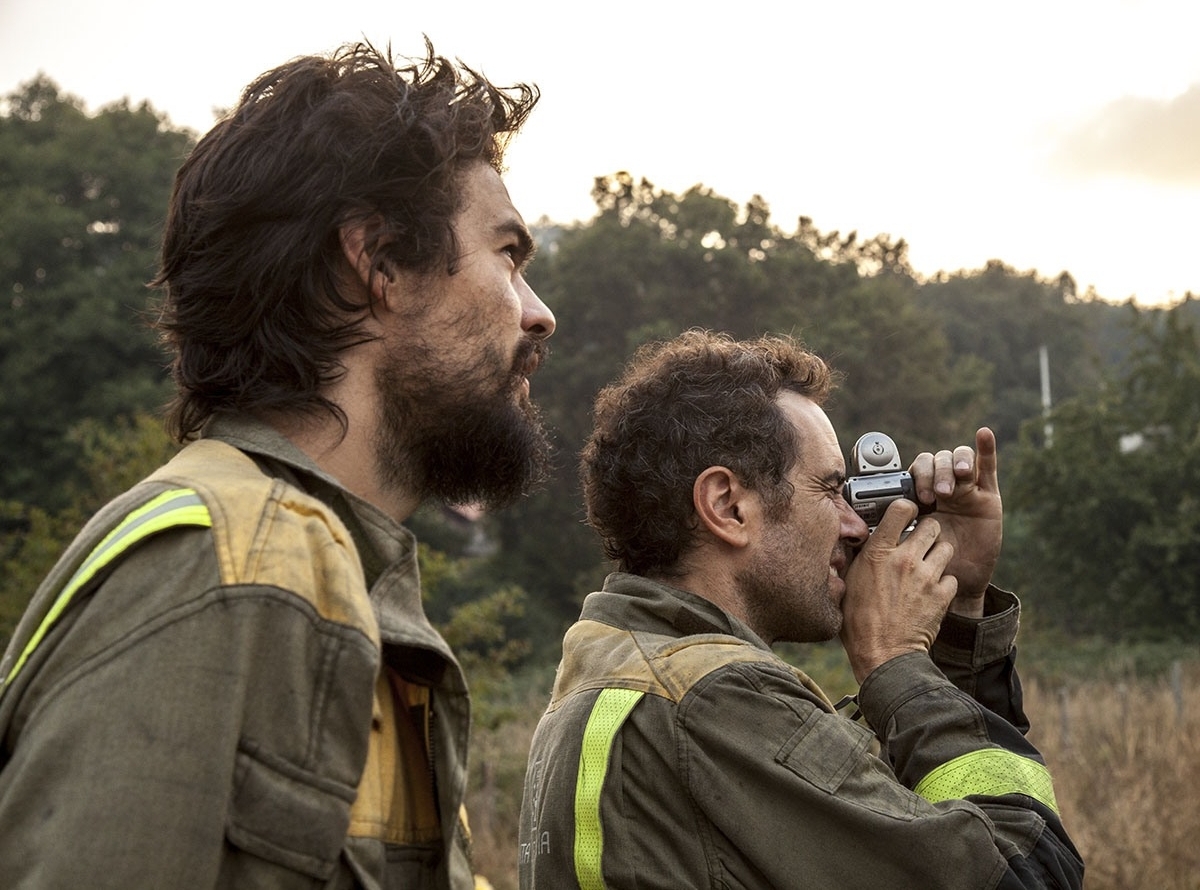
DP Mauro Herce takes a light reading during production O Que Arde accompanied by director Oliver Laxe. Image © miramemira.
“Kodak film is great for shooting in natural light, and I love the way it responds to colour,” he says. “When you shoot in available light, the 250D always delivers lovely, eloquent results, especially of the tender but menacing moments between Amador and Benedicta. While both the saturation and contrast of the 250D are a little bit stronger than the 500T, the two filmstocks work well in combination with one another.
“I chose the 500T, not because we didn't have enough light in the fires, but to have a little more latitude in the extreme contrast of the night. Shooting between T4 and T2.8, I knew I could let any highlights bloom and burn-out and still be confident of having detail in the lower part of the image, even when we were not far from the flames. I also like the 500T for shooting fires, as it accurately records the colours and shapes of flames. Plus, there is something magical in the way firelight burns the grains of silver on the emulsion, creating a texture which is simply beautiful to behold.”
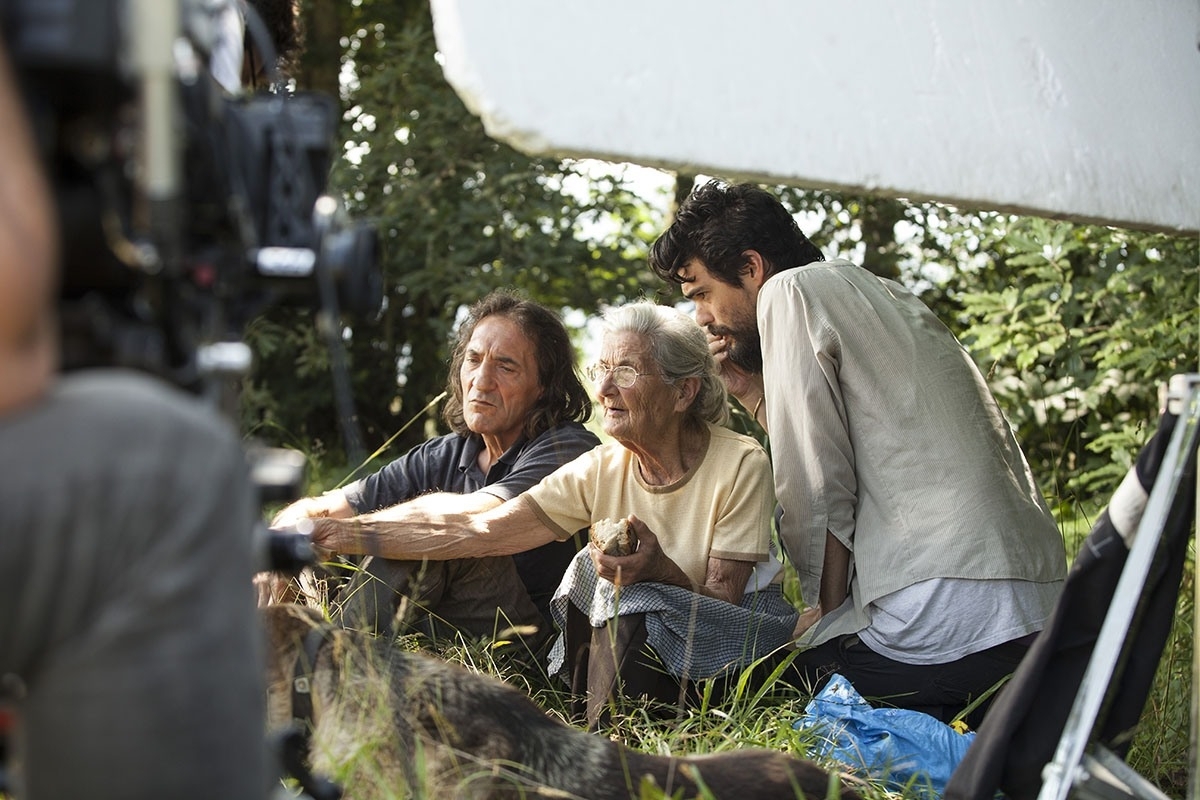
Actors Amador Arias and Bendicta Sánchez with director Oliver Laxe during production on O Que Arde. Image © miramemira.
Herce’s crew included Raúl Morales as the 1st AC on the movie’s narrative sections, with Carlos Cañal performing 1st AC duties on the fire sequences. Pablo Rendo worked as the gaffer/key grip. Film negative was processed at Cinelab in Romania, part of the Cinelab International Group that also has motion picture processing facilities in the UK and Greece.
“The result of using 16mm on O Que Arde is just so special, especially the fire scenes, which look spectacular,” Herce concludes. “Overall, celluloid provided a unique visual sensitivity to support an important story about a vanishing way of life. I just adore shooting on film so much.”
And lucky for him. Herce’s very next project, a feature titled Matadero, with Santiago Fillol at the helm, shooting in Argentina and Canary Islands, will be on celluloid too.